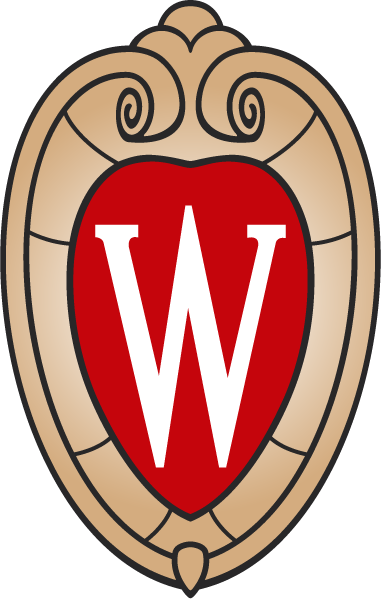
Computerized Transmission Line Design PLS-CADD Hands-On Training
interpro.wisc.edu/RA00069 See upcoming datesCourse Overview
This interactive computer lab course blends theory with practical application to teach the fundamentals and advanced features of PLS-CADD. Participants will learn to model terrain, conductors, and structures; evaluate line performance; and produce construction documents using real-world case studies. From LiDAR data integration to structure modeling and refurbishment planning, this course delivers the tools needed to confidently manage modern transmission line projects.
Learning Outcomes
- Use PLS-CADD to model terrain, conductors, and structures for new and existing transmission lines.
- Apply design criteria, clearance checks, and performance analysis to optimize line layout and reliability.
- Generate construction documents and assess existing infrastructure for upgrades or refurbishment.
Who Should Attend?
- Transmission line design engineers and structural engineers working on overhead line projects.
- CAD technicians, drafters, and surveyors involved in line modeling and documentation.
- Consulting engineers and utility professionals seeking to enhance their PLS-CADD proficiency.
Course Outline
Overview and Terrain Modeling
- PLS-CADD system overview
- Presentation of projects
- How to organize project files
- View commands, opening of windows, viewing of phases and sags
- Needed terrain data and surveying
- Prepare a terrain model
LiDAR Aerial Surveying
- How to use 3-dimensional survey data
- Building design models from LiDAR data
- Identifying clearance limits and potential for clearance upgrades
Conductor Design and Modeling
- Various conductor types
- Conductor properties: advantages and disadvantages
- Permanent deformation from overloading and creep
- Effects of high temperature on creep and strength reduction
- Conductor models in PLS-CADD
- Aeolian vibrations: how to limit
- Temperature vs. ampacity
- Line thermal rating
Design Criteria
- Weather data
- Wind and ice loads: gust response factors, etc.
- Conductor limits of use
- Conditions for automatic sagging
- Structure loads and safety factors
- Conditions for checking clearances
- PLS-CADD/LITE: simplified PLS-CADD module
Structures Modeling by Allowable Spans
- Available structure models - allowable spans method - full analysis method
- Material lists, parts lists
- Create and edit allowable span structures
Interactive Line Design
- Spot structures interactively
- String and sag conductors: demonstrate
- Check clearances: vertical, between phases, galloping, etc.
- Check overall design efficiency
Generate Construction Documents
- Plan-and-profile sheets, staking lists, stringing charts, offset clipping, etc.
Modeling of Poles and Frames by Analysis
- Overview of structure programs; PLS-POLE
- Create and edit wood, steel and concrete poles/frames
- Determining allowable spans of existing structure designs
Modeling Existing Lines, Assessment, and Refurbishing
- Modeling existing lines and structures
- Assessment, reconductoring, refurbishing, etc.
- Joint use issues and modeling
- Links to SAPS
Automatic Optimum Spotting
- Theory and examples
Checking Detailed Tower Models
- Brief overview of TOWER program capabilities
- Linkage between PLS-CADD and TOWER
- Checking and modifying older tower designs
Instructor
Tim Cashman, P.E.
Tim Cashman, PE, is Director of Engineering Services for Power Line Systems (PLS) in Madison, WI. He has more than 35 years of experience in routing, design and constructions of overhead lines ranging from 69kV thru 500kV in his previous positions as a consulting engineer and in his current position at PLS. Tim has conducted training courses using PLS software for over 25 years and is involved with technical support, software testing and development of new features at PLS. He is a registered Professional Engineer and is an active member of ASCE 10 Latticed Steel Transmission Structures committee. Tim received a bachelor’s degree in civil and environmental engineering from the University of Wisconsin – Madison.
Past dates
Computerized Transmission Line Design
Course #: RA00069Computerized Transmission Line Design
Date: Mon. March 03, 2025 – Fri. March 07, 2025ID: RA00069-D621
interpro.wisc.edu/RA00069
Fee:
- $2,395
- Fee covers morning and afternoon breaks, scheduled lunches, course materials.
- CEU: 3.2
- PDH: 32
1805 Hotel Plaza Blvd
Lake Buena Vista, FL 32830
Computerized Transmission Line Design: PLS
Date: Mon. December 09, 2024 – Fri. December 13, 2024ID: RA00069-D576
interpro.wisc.edu/RA00069
Fee:
- $2,395
-
This course is offered in-person only
Fee covers morning and afternoon breaks, scheduled lunches, course materials.
- CEU: 3.2
- PDH: 32
1805 Hotel Plaza Blvd
Lake Buena Vista, FL 32830
